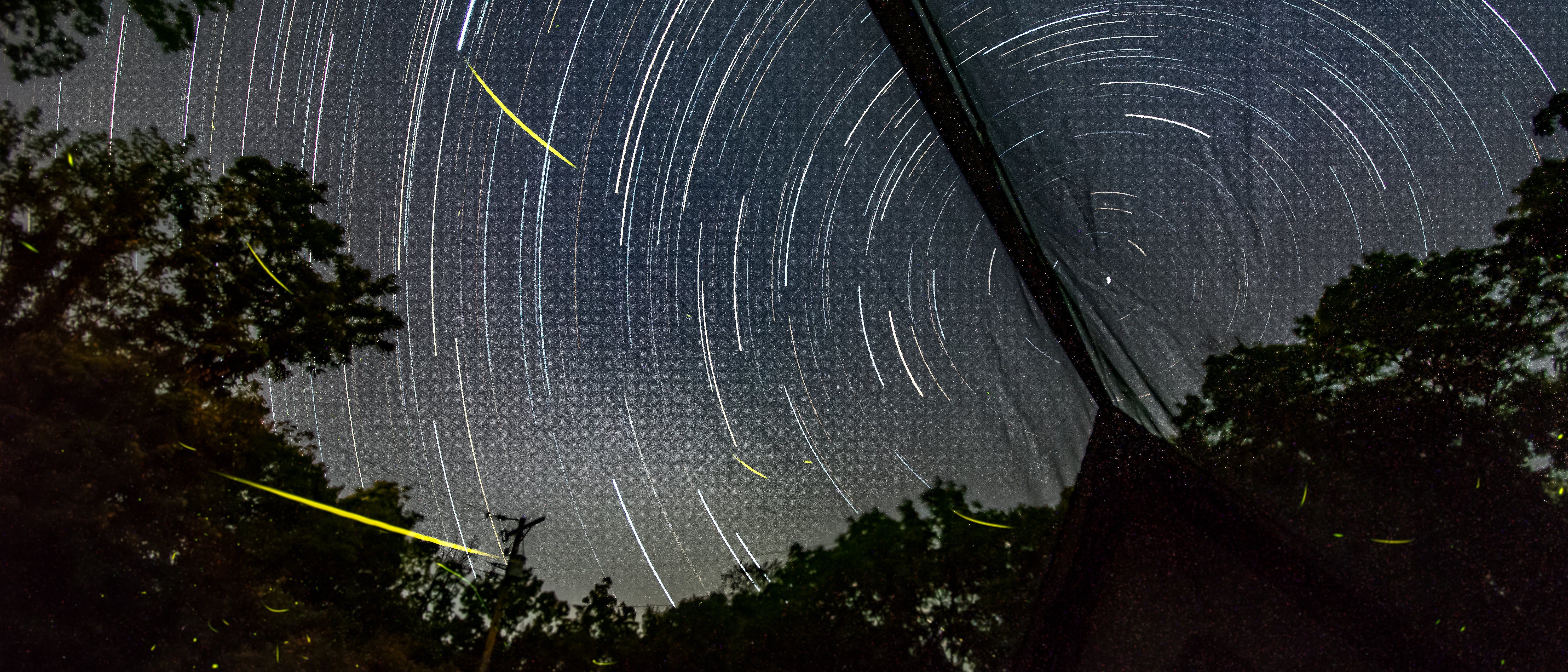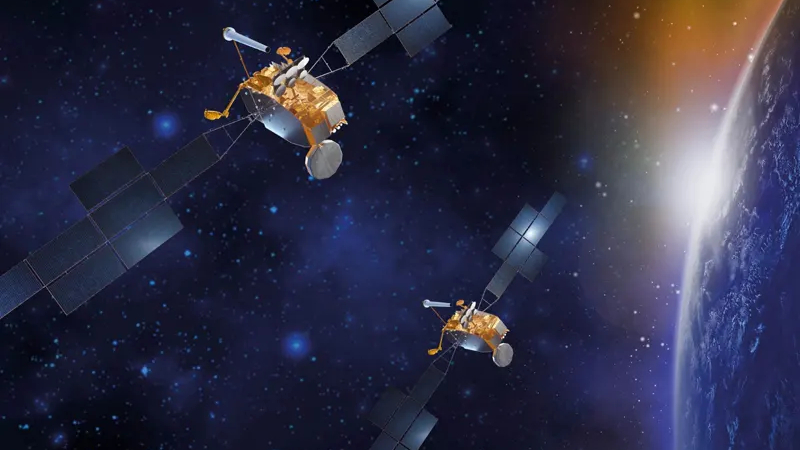Space Verdict
Pros
- +
Compact
- +
Easy setup
- +
Complete overhead view
Cons
- -
No privacy
- -
Thin material
- -
Disadvantage in the rain
Why you can trust Space.com
For the average overnight stargazer and astrophotographer prioritizing compact and lightweight gear for their trek, the new Backpacker from Colorado-based Sky View Tents may be exactly what you need.
The Backpacker is a purpose-built, three-season stargazing tent that offers a huge, lay-on-your-back panoramic view of the night sky that is perfect for first-timers or seasoned sky watchers. With some minor drawbacks if you get caught in a storm, and a major trade-off in privacy, the Backpacker provides a quick setup shelter ideal for two people, or a solo trek with ample equipment for a night of astrophotography.
As is any evening planned for staring up at the night sky, weather is a major factor in this tent's functionality. An easy-to-deploy interior rainfly helps with those unexpected downpours, but it's just short of completely waterproof, and a thin blanket of condensation can build up in the mornings when waking up in more humid, dewy climates.
Sky View Backpacker stargazing tent review
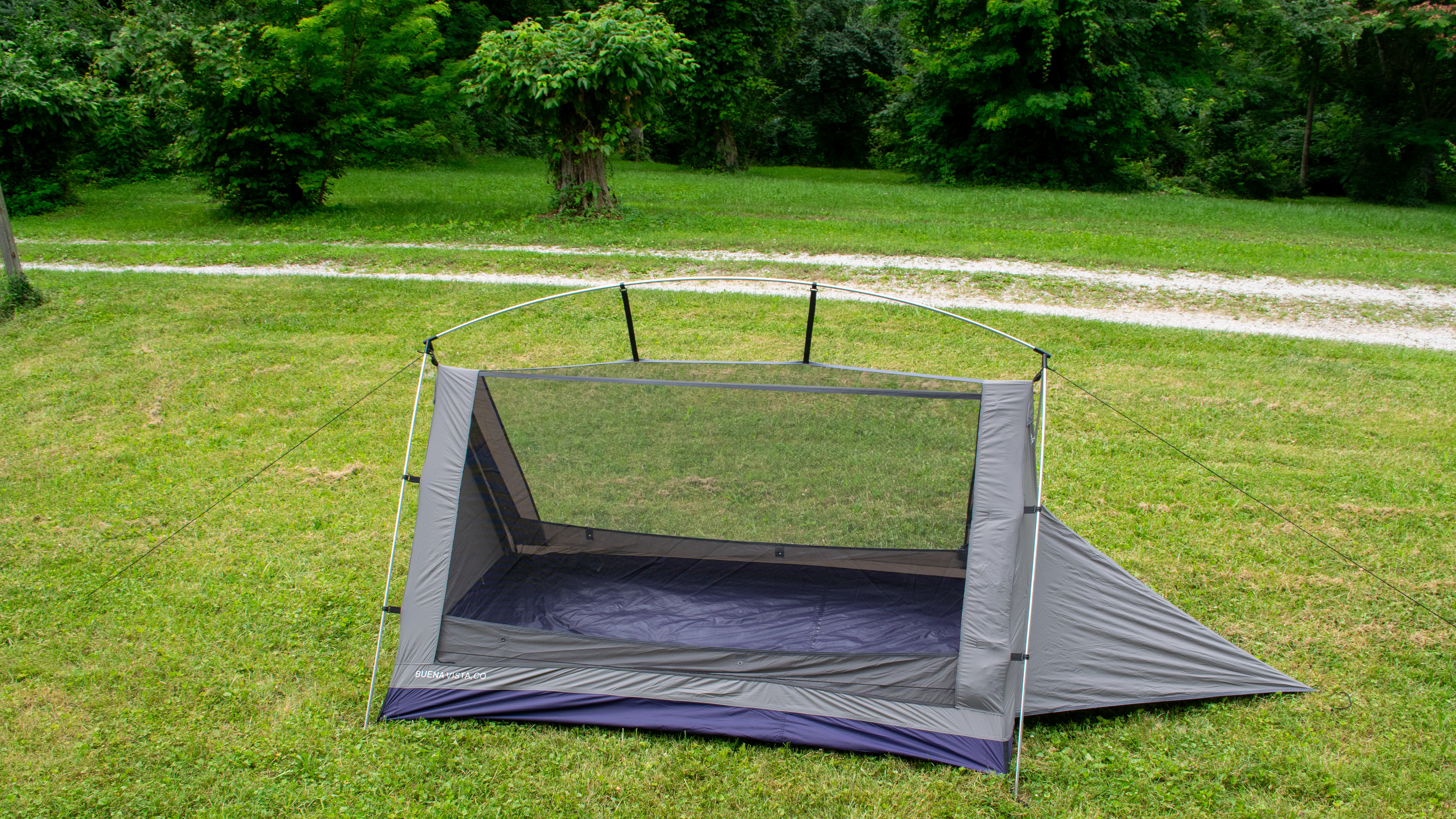
Sky View Tents Backpacker: Design
- Small and lightweight
- Quick-deploy interior rainfly
- Mesh ceiling
The Sky View Tents Backpacker features a ceiling made of a fine mesh that almost completely disappears against the night sky. The view through the top of the tent is virtually unobstructed across the 180-degree view, save the thin line across the center that supports the rainfly when deployed.
The Backpacker's simple double A-frame/arched pole structure creates a modestly sized 52-inch by 80-inch rectangular base, with a triangular frame peaking at 42-inches tall. When packaged, the 4.6 pounds of tent, poles, stakes and carrying bag compresses to a six-by-six-inch bread loaf-sized 20-inch tube.
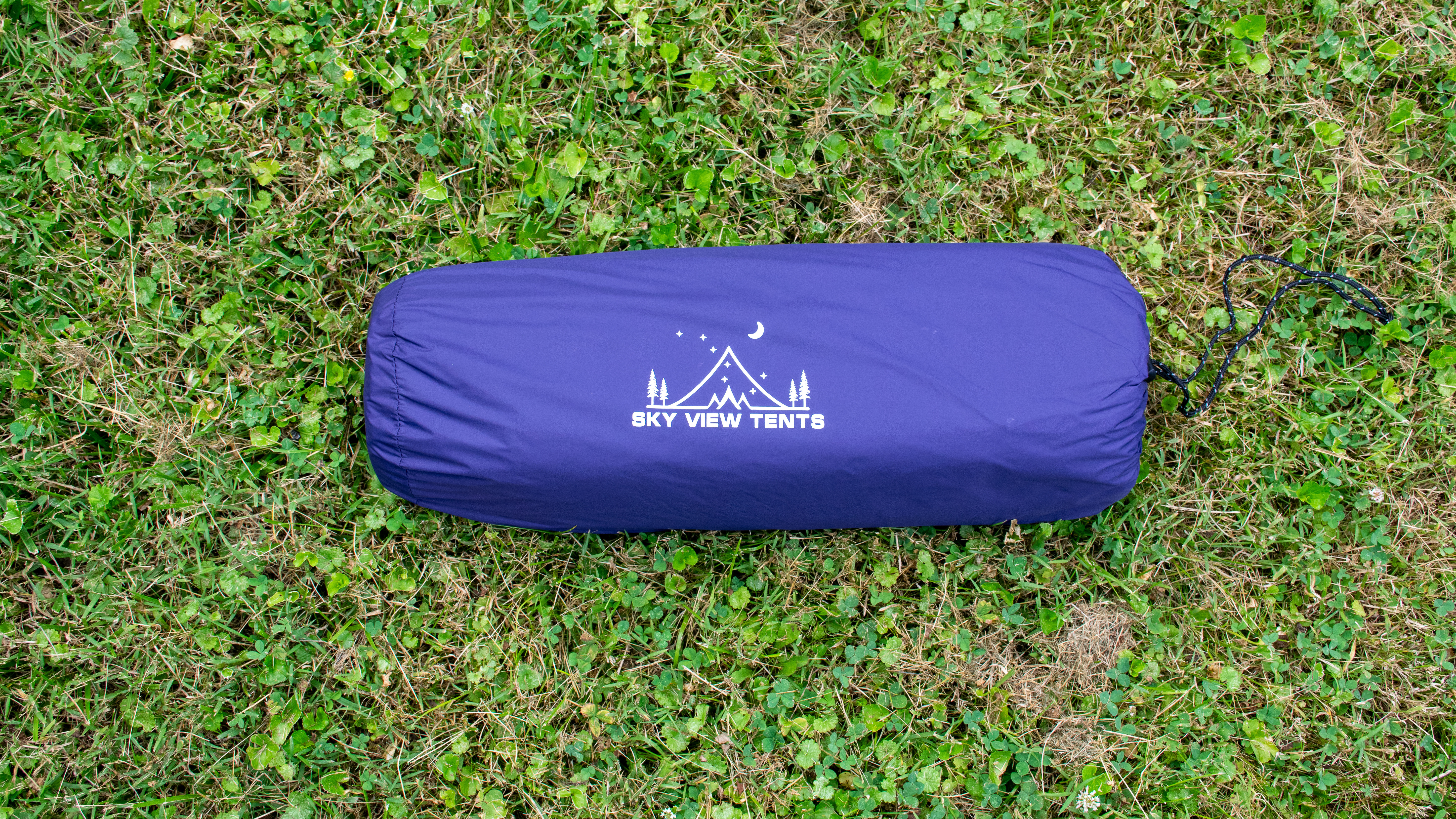
When pitched, the tent features one primary door for entry and exit, and a smaller hatch flap on the opposite side that opens underneath a low overhang canopy staked to the ground as a "dry storage" area for shoes or a small bag.
Low-profile, rounded-edged stakes secure each corner of the tent to the ground. Guidewires stretch to stakes on either end of the Backpacker tent help support the structure, but be careful not to trip on them when getting in and out.
Breaking space news, the latest updates on rocket launches, skywatching events and more!
Inside, there is a single cell phone-sized pocked to keep some small personal items you don't want rolling around, but that is it as far as interior amenities. The tent's material feels thin, but seems sturdy. Without a tarp underneath, it felt like spikes of dry grass might be enough to poke through the bottom, but none were successful. Sky View Tents sells the Backpacker Footprint for an extra base layer of protection.
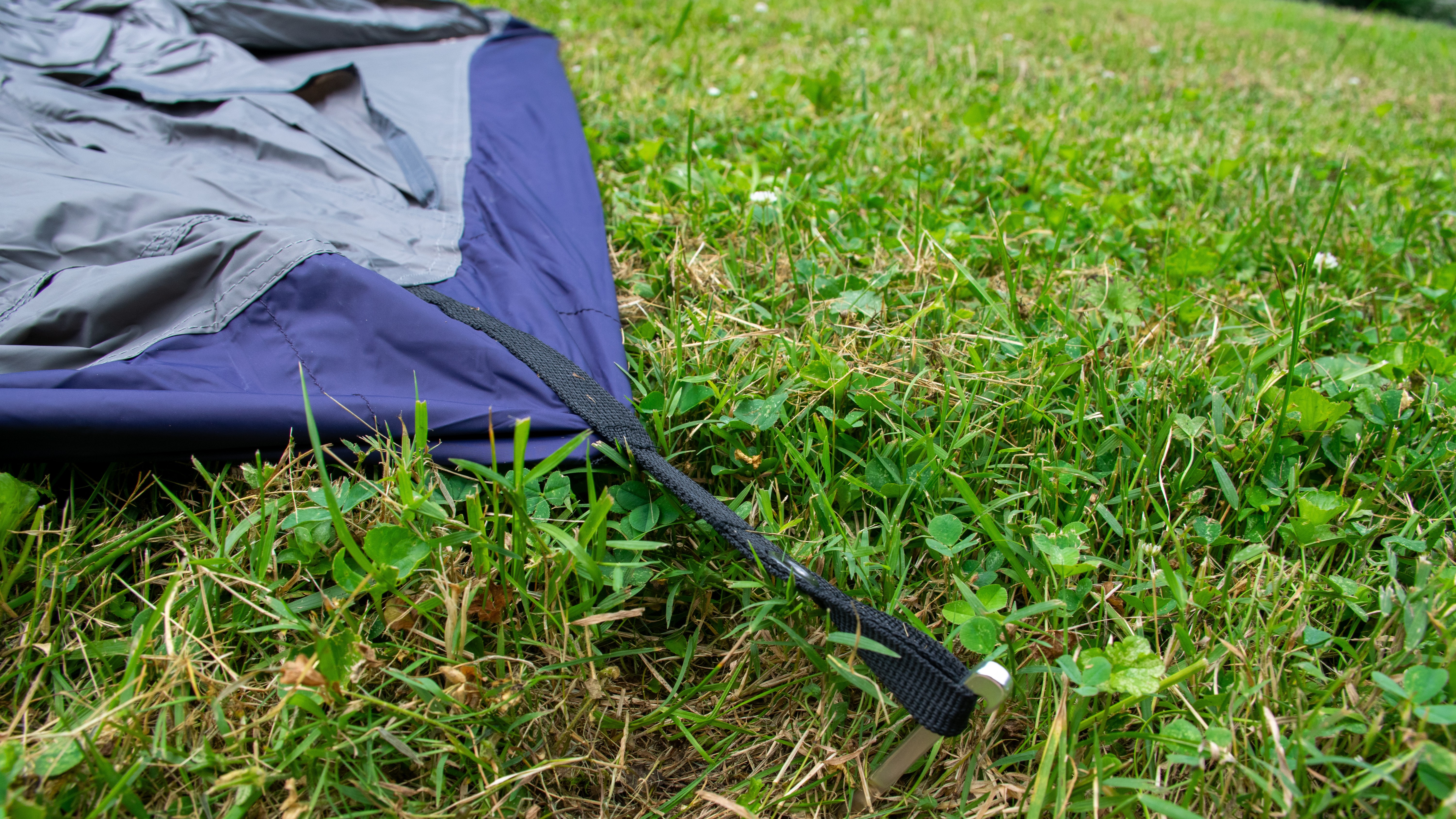
Sleeps: 2, or 1 with some camera gear
Pitch type: semi-freestanding
Waterproofing: Interior rainfly, sealant-coated reinforced seams
Weight: 2.09kg
Material: 20D Tear-Resistant Nylon
Dimensions: Floor area of 1.32 meters by 2.03 meters, interior height of 1.07 meters
From the outside, the Backpacker can be hard to see at night, so use a flashlight or good headlamp when walking around outside to keep from tripping over it. On the inside, the tent's ultra-fine mesh ceiling remains largely invisible as you gaze at the stars, though some wrinkles in the material here and there can give it away.
At the far end of the tent's interior, a thin pocket drapes over the frame, fastened closed with plastic hooks. Scrunched inside that pocket flap, the unfurlable rainfly that extends across the top center line at the ceiling and secured on the other side with six hooks. Near the bottom, along the seam on either side where the ceiling mesh meets the nylon, long parallel pockets held up taught by sets of bottom hooks on the rainfly serve as gutters for guiding runoff water down through the mesh and outside, rather than into the tent's interior.
Sky View Backpacker: Performance
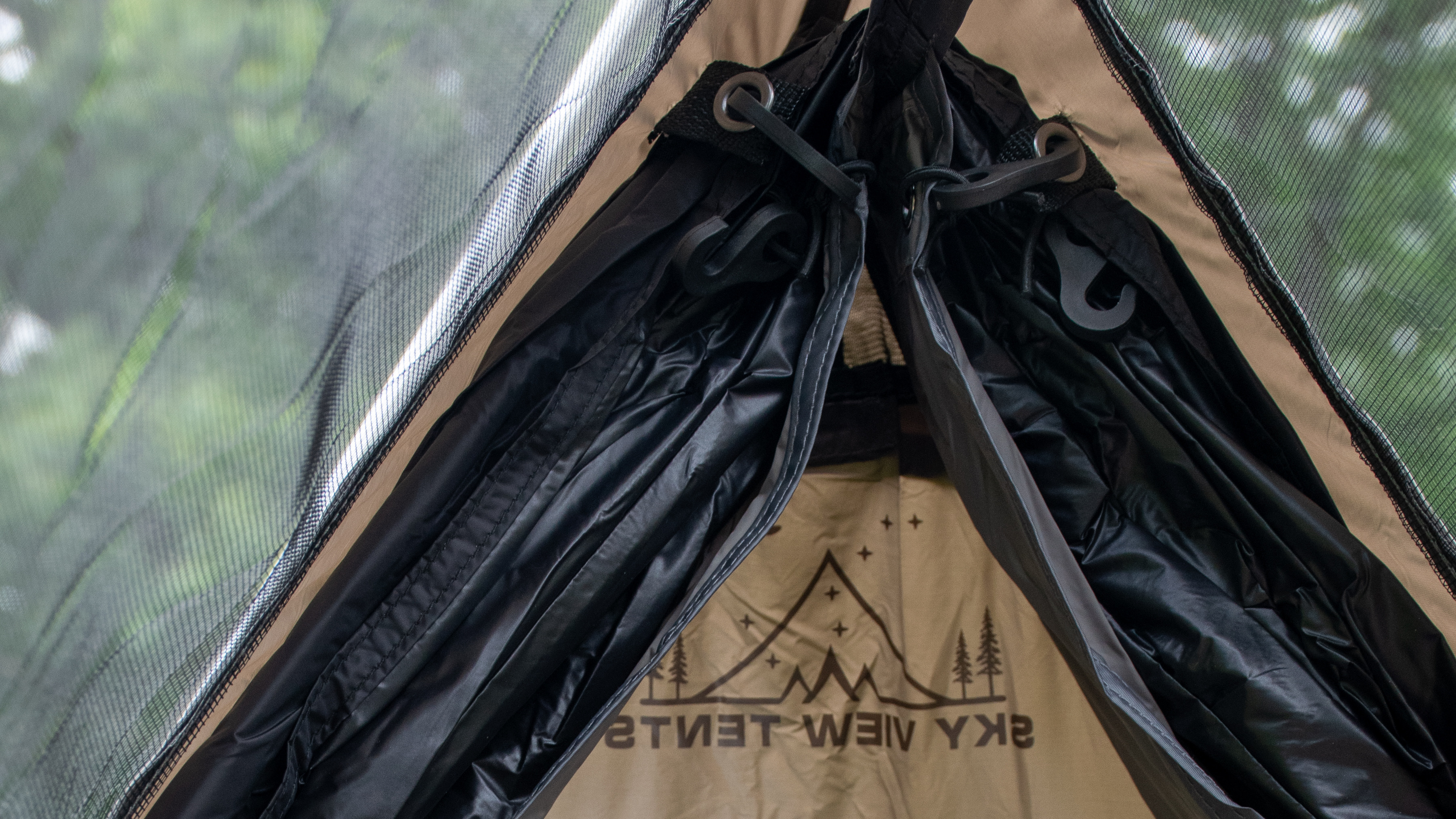
- Easy, intuitive setup
- Quick-deploy rainfly, but gets muggy fast
- Mesh is an afterthought while stargazing
First, and maybe most importantly, is the ability of the Sky View Backpacker to live up to its name, and it certainly does. Laying down in this tent is virtually the same as laying down in an open field to look at the night sky. Though obvious on camera, the few wrinkles on parts of the mesh are much harder to see with the naked eye, and its easy for your brain to ignore the line strung across the top after a few minutes stargazing.
Setting up the tent for the first time took less than 10 minutes, and gets even quicker after you've done it once or twice. By virtue of that fast assembly and breakdown, the Backpacker is useful both for camping, and also the quick jaunt out for a few hours sky watching. For particularly buggy nights, for example, someone wanting to shoot some star trails can setup their camera gear outside, then wait unbothered by the insects inside the tent without sacrificing the view.
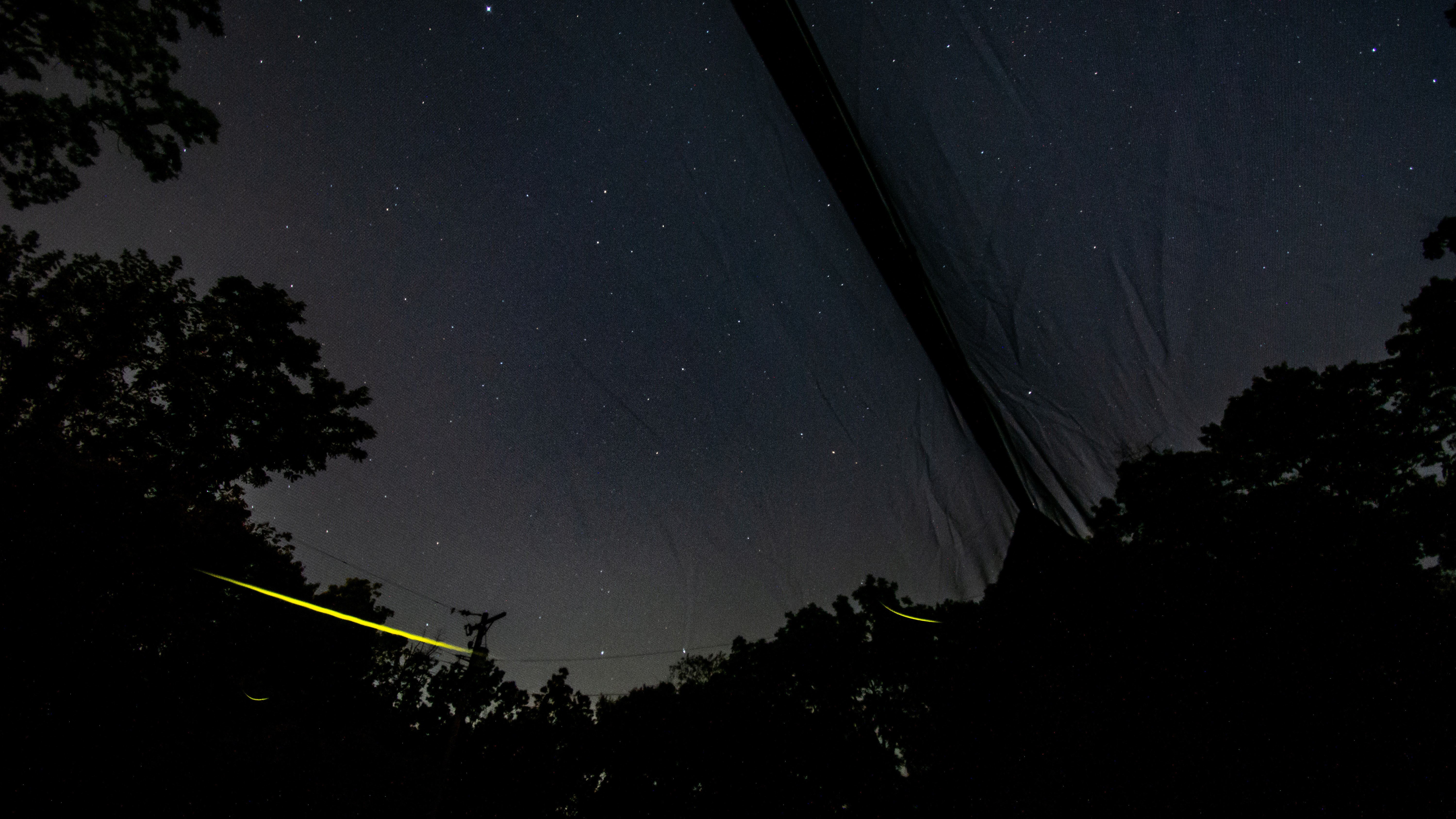
For those opting for overnight outdoor stays, it may be a good idea to deploy the rainfly, at least a little, before going to sleep. Even with fair weather, the inside of the Backpacker isn't spared from the morning dewfall, and the rainfly goes a long way in deflecting the buildup. As long as it's not actually raining, though, there isn't a need to close the overhang all the way, and, in fact, leaving a section uncovered near the main door helps a lot with airflow.
If you do get caught in a quick storm, or even a longer one, the rainfly has been well designed to deflect the downpour. A downside, however, is how muggy the tent can get when this is the case. A fully deployed and secured rainfly cuts off the tent's ventilation, and with limited space, the air inside gets thick quickly.
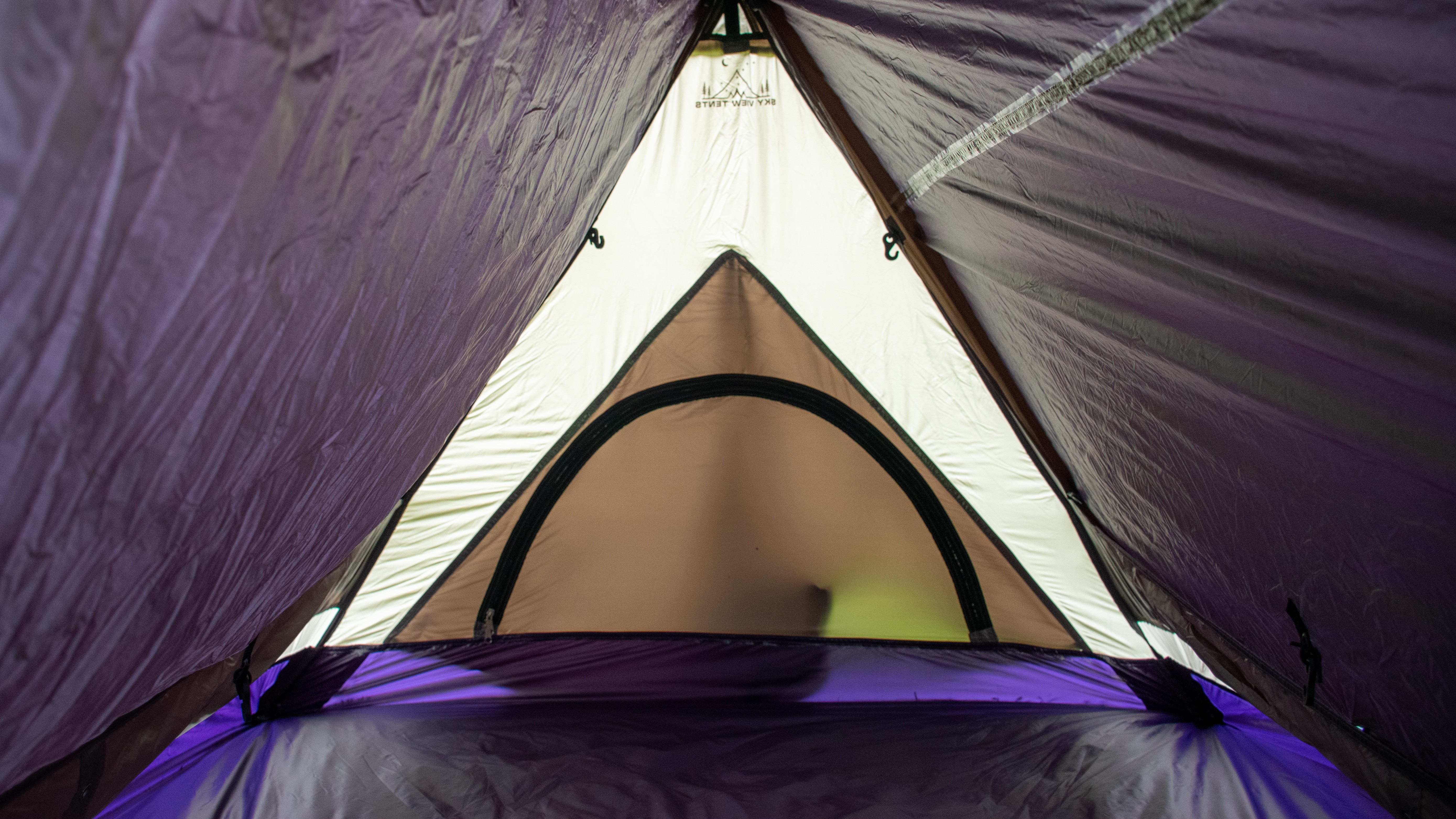
When it comes to durability, the tent's material seems just a little thin. Though, through several setups and breakdowns over many nights, the nylon showed no snags or tears. Neither did the mesh, but you should still be careful not to catch it on something sharp. The zippers, too, felt clean and sturdy, and never got caught while opening and closing the different flaps.
If you want to travel even lighter, Sky View designed the Backpacker to be strung up using hiking sticks, letting you leave the tent poles at home. Though we did not have the chance to test that capability during our review, ditching the poles does bring the tent's weight down to 3.25 pounds (1.5 kilograms).
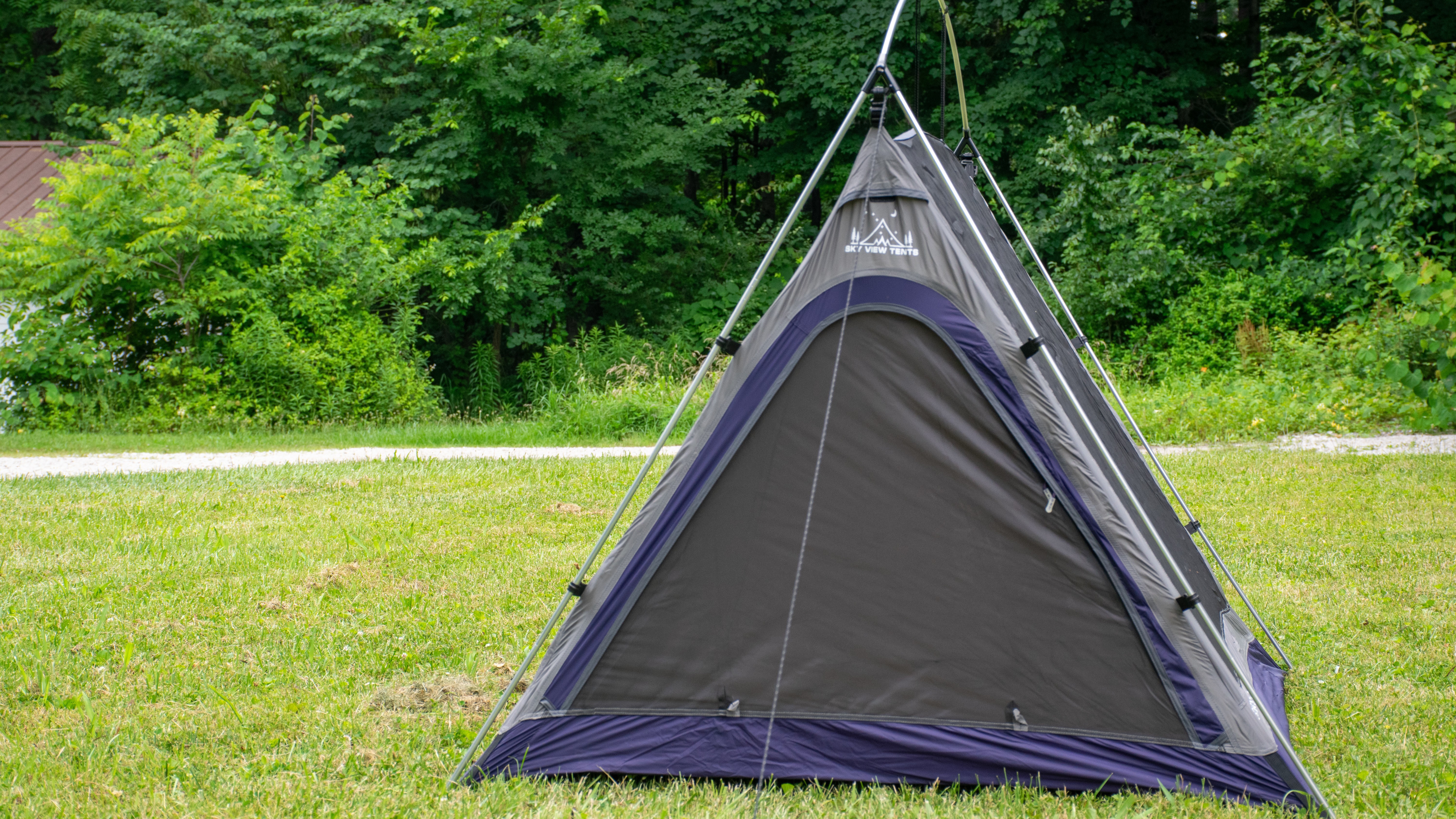
Should you buy the Sky View Backpacker?
✅ You want a simple, packable shelter: The Sky View Backpacker tent maximizes visibility for stargazing overnights and extended astrophotography shoots.
✅ You want a fast, repeatable setup: The Backpacker sacrifices complication for simplicity to offer a no-frills "sleep under the stars" experience.
❌ You often camp in wet climates: This is not the tent for long-term backpacking trips where you expect to run into inclement weather.
❌ You need elbow room for two: The Backpacker can fit up to two occupants, but they'll need to be very comfortable with one another.
The Backpacker is an easy, pick-up-and-go tent that's perfect for a pair of stargazers, or a solo camper hauling some camera gear for an astroshoot or just to lay back and look at the night sky. It provides a quick shelter and a lightweight design that easily integrates into a camera bag or camping backpack — hence the name.
The interior rainfly gives it a leg up against other tents with rain guards that attach on the outside of the roof, but as tents go, the Backpacker is built with a singular purpose. This tent is for you if you want to add to your sky watching arsenal to provide some shelter on those longer treks to darker skies. But its convenience and functionality come at a bit of cost. Literally.
If the Sky View Backpacker isn't for you
Similarly sized tents can be found at some major retailers as cheap as $30, or up to almost $300, depending on their amenities and build quality. The Sky View Backpacker comes with a $350 price tag. Other tents and pop-up shelters built for stargazing range between about $100 and $350.
Replace the below with relevant buying guides/deals hubs on our site:
Best binoculars
Best binocular deals
Best nightvision binoculars
Best monocular
Best binoculars for kids
Best compact binoculars
If you want a more rugged tent for a longer camping trip, something a little more robust may be what you're looking for. If space is your main deterrence to the Backpacker, Sky View Tents does offer a larger XL Stargazing Tent built to fit three people.

Josh Dinner is the Staff Writer for Spaceflight at Space.com. He is a writer and photographer with a passion for science and space exploration, and has been working the space beat since 2016. Josh has covered the evolution of NASA's commercial spaceflight partnerships and crewed missions from the Space Coast, as well as NASA science missions and more. He also enjoys building 1:144-scale model rockets and human-flown spacecraft. Find some of Josh's launch photography on Instagram and his website, and follow him on X, where he mostly posts in haiku.
You must confirm your public display name before commenting
Please logout and then login again, you will then be prompted to enter your display name.
